A favorite vocabulary strategy at the high school this past spring was synonym triplets. In brief, the strategy involves finding two synonyms for an assigned vocabulary word. Drawing a symbolic representation of the word further enhances the understanding of the word.
Most teachers simply modeled one synonym triplet for a vocabulary word and then assigned other vocabulary words to pairs or groups of students so that the synonym triplets would be student-generated. This also saves teacher preparation time.
Students only need a dictionary and a thesaurus to find their synonyms, but deciding on which synonyms will best help their classmates learn the word involves some great discussions. This is another reason to have students work in pairs or groups to create synonym triplets. And the symbolic representation is also a great discussion topic for groups.
In World Literature, I gave my seniors a list of the vocabulary words so that they had a place to record the synonym triplets generated in their class. Since I assigned vocabulary words at the beginning of each act of Othello, I wanted to vary the synonym triplet assignment each time. One time students drew a symbolic representation; one time they performed a dance or stood in a tableau that represented their vocabulary word, and one time they created a hand gesture. By the end of the play, I was feeling overwhelmed by the number of vocabulary words that I had given students, so I created just one list of vocabulary words for Acts 4 and 5 together. That day I assigned pairs their vocabulary word and told them to either create a synonym triplet or simply find the definition in the dictionary. Here's my recollection of the classroom discourse that followed my assignment:
Student 1: Are we supposed to draw a picture, create a hand gesture, or what for our word?
Teacher: You don't have to do anything fancy. Just find the definition.
Student 2: You're kidding us. Are we just doing vocabulary the old fashioned, boring way?
My students were not deterred by my simplified assignment. I saw many students discussing, "If we had to create a hand gesture or body movement, what would we do?" It was then that I realized the true power of this strategy. Students were engaged with learning new words, and I was trying to hurry them along.
Sarah Jarrett also had success with synonym triplets in her classroom. Sarah commented that her students were very enthusiastic during synonym triplet days, and some students even beat boxed during their vocabulary word presentations. Sarah observed that one student, who was very excited about this vocabulary strategy and the beat boxing, did so much better on the vocabulary test on the words from synonym triplet day than he done on previous vocabulary tests.
Beth Neary also noticed increased vocabulary retention with this strategy in her Advanced Placement Spanish Literature class. Beth reported that her advanced students could ace vocabulary tests just by memorizing lists of words and definitions; however, when she used the words later in the year, they couldn't recall the definition. In January Beth had students create a synonym triplet quilt (in Spanish) for the vocabulary words in that unit, and when Beth asked the students about the words in May, they could still recall the definitions.
The synonym triplet quilt idea was the brainchild of Jen Cordes, a special education teacher at the high school. She had her students create a quilt of words for Midsummer Night's Dream. Both Jen's special education English 10 class and Beth's AP Spanish class, created quilts of vocabulary words where students punched holes in their squares and tied the squares together with yarn.
Edina's NUA coaches used a similar quilt strategy in a teacher workshop this summer, but we didn't tie the squares together. Instead, Deb Stortz just made sure colors of paper squares were equally distributed and then hung in a quilt pattern. The finished quilt is shown below.

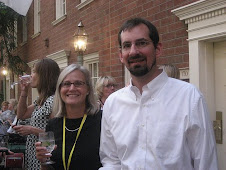
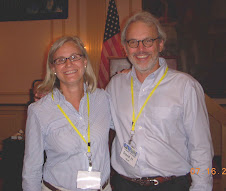
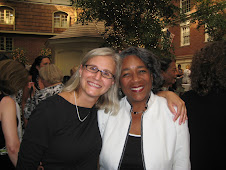
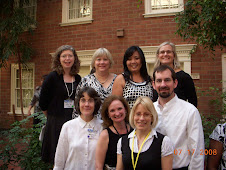
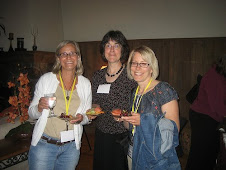
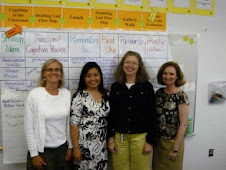

No comments:
Post a Comment